Alright, fam, let’s talk about something that’s about to become the way you connect with your fans in the wild world of music: Personalized Playlists. We’re not talking about the basic “Artist’s Picks” playlist you slap together and throw up on Spotify. We’re talking DEEP personalization, reaching fans on a 1-to-1 level. It’s 2026, and if you’re not thinking about this, you’re already behind. Whether you’re a seasoned artist looking to level up or a newbie trying to make your mark, this is your guide to crafting experiences that will turn listeners into die-hard fans.
Why Personalized Playlists Are the Future (And Why They’re Way More Than Just Music)
Look, let’s be real. The music industry is a crowded arena. Streaming services are overflowing with content, and attention spans are shorter than ever. Just dropping a song and hoping for the best isn’t gonna cut it. You need to cut through the noise. And that’s where personalized playlists come in.
Think of it this way: imagine walking into your favorite coffee shop, and the barista knows your name, your usual order (a soy latte with oat milk, extra foam, obviously), and even suggests a new pastry based on something you bought last week. Feels good, right? Personalized playlists are that experience, but for music.
They’re about:
-
Deepening the Connection: It’s not just about listening; it’s about a vibe, a feeling, a shared experience between you and the listener. A personalized playlist is like a digital mixtape, crafted just for them. Remember making those? The feeling of connection when you gave someone a playlist of songs that meant something to you? That’s the feeling you’re shooting for.
-
Data-Driven Discovery: In 2026, data is king (or queen). We’re talking about using algorithms and AI (don’t freak out, we’ll break it down) to understand what your fans really want. What moods are they vibing with? What artists are they similar to? What’s the context of their listening? This helps you curate playlists that resonate on a deeper level.
-
Creating Loyalty: A fan who feels understood and appreciated is a fan for life. Personalized playlists foster that feeling of connection, turning casual listeners into dedicated supporters who are eager to buy your merch, attend your shows, and spread the word about your music.
-
Unlocking New Revenue Streams: Beyond just royalties from streaming, personalized playlists open doors to collaborations, sponsorships, and even exclusive content opportunities. Imagine a playlist sponsored by a local coffee shop that aligns with your music’s vibe, offering discounts to fans who listen. We’re talking outside-the-box thinking!
The Tech & Tools: What You Need to Get Started
Okay, enough with the theory. Let’s dive into the nitty-gritty. To create killer personalized playlists, you’ll need to leverage some key technologies and platforms. Don’t worry; you don’t need to be a coding whiz. Many user-friendly tools are available.
-
Data Analysis Platforms: These are the engines that drive personalization. They gather and analyze data about your listeners’ preferences, behavior, and demographics. Think of companies like SoundCloud, Spotify, and Pandora, they all use some form of data analysis, to help suggest music to their listeners. These platforms are becoming increasingly sophisticated, offering insights into everything from listening habits to emotional responses to your music.
- What to look for: Platforms that offer granular data segmentation, customizable dashboards, and integration with other marketing tools.
-
AI-Powered Recommendation Engines: This is where the magic happens. AI algorithms analyze the data collected by data analysis platforms to generate personalized playlist recommendations. These engines consider factors like musical taste, listening context (time of day, location, activity), and even social media activity to create playlists that are tailored to each listener’s individual needs.
- Check out: Musicoin’s Artificial Intelligence.
- What to look for: Engines that offer customizable rules and parameters, real-time learning capabilities, and the ability to integrate your own unique data sources.
-
Personalized Content Delivery Platforms: Once you’ve created your personalized playlists, you need a way to deliver them to your fans. This could involve integrating with existing streaming services, developing your own custom app, or leveraging social media platforms.
- What to look for: Platforms that offer seamless integration with popular streaming services, customizable branding options, and robust analytics tracking.
-
CRM (Customer Relationship Management) Systems: This is the glue that holds everything together. A CRM system allows you to manage your fan relationships, track their interactions with your music, and personalize your communication with them. Think of it as your central hub for understanding and engaging with your fanbase.
- Check out: Salesforce for musicians, or if you are just starting out, check out Hubspot CRM.
- What to look for: Systems that offer detailed fan profiles, automated email marketing capabilities, and integration with your other marketing tools.
Making It Personal: Playlist Strategies That Actually Work
Now, let’s get into the fun part: crafting personalized playlists that resonate with your fans. Here are some tried-and-true strategies that you can adapt to your unique brand and style:
-
Mood-Based Playlists: Create playlists that cater to different moods and emotions. Are your fans feeling energized and ready to dance? Create a high-energy playlist with upbeat tracks. Are they feeling mellow and reflective? Create a playlist with mellow, atmospheric tunes.
- Pro Tip: Use AI to analyze the lyrical content and musical characteristics of your songs to identify the moods they evoke. This will help you create more accurate and engaging mood-based playlists.
-
Activity-Based Playlists: Tailor playlists to specific activities. Create a playlist for working out, studying, relaxing, or even cooking. This shows that you understand your fans’ lifestyles and are providing them with value beyond just music.
- Pro Tip: Encourage fans to share how they’re using your activity-based playlists on social media. This will help you gather valuable feedback and promote your music to a wider audience.
-
Location-Based Playlists: Create playlists that are inspired by specific locations. If you’re touring in a particular city, create a playlist with songs that capture the vibe and energy of that place.
- Pro Tip: Partner with local businesses to promote your location-based playlists. For example, you could offer discounts to fans who listen to your playlist while visiting a local coffee shop or restaurant.
-
Personalized “Mixtapes”: Create unique playlists for individual fans based on their listening history, preferences, and demographics. This is the ultimate level of personalization and shows that you truly care about your fans.
- Pro Tip: Use AI to generate personalized playlist recommendations based on each fan’s individual data. You can also ask fans to provide feedback on your recommendations to improve the accuracy of your AI.
-
Genre-Bending Playlists: Don’t be afraid to experiment with different genres and styles. Mix your music with tracks from artists who are similar to you, as well as artists who are completely different. This will expose your fans to new music and show that you have a broad taste.
- Pro Tip: Collaborate with other artists on genre-bending playlists. This will help you reach new audiences and create a unique listening experience for your fans.
-
Interactive Playlists: Go beyond just creating a static playlist. Incorporate interactive elements like polls, quizzes, and Q&A sessions to engage your fans and gather feedback.
- Pro Tip: Use social media platforms like Instagram Stories and TikTok to host interactive playlist sessions. This will help you reach a wider audience and create a more engaging experience for your fans.
-
“Behind-the-Music” Playlists: Share the stories behind your songs. Create playlists that include commentary, anecdotes, and insights into your creative process. This will give your fans a deeper appreciation for your music and help them connect with you on a more personal level.
- Pro Tip: Use platforms like Patreon to offer exclusive “behind-the-music” content to your most dedicated fans.
Ethical Considerations: Data Privacy and Transparency
While personalized playlists offer incredible opportunities for connecting with fans, it’s crucial to be mindful of ethical considerations, especially regarding data privacy. In 2026, people are more aware of how their data is being used, and they expect transparency and control.
- Transparency: Be upfront about what data you’re collecting and how you’re using it. Explain your data privacy policy in plain language that your fans can easily understand.
- Consent: Obtain explicit consent from your fans before collecting their data. Give them the option to opt out at any time.
- Security: Protect your fans’ data with robust security measures. Invest in encryption and other technologies to prevent data breaches.
- Privacy: Respect your fans’ privacy. Don’t share their data with third parties without their consent.
- Control: Give your fans control over their data. Allow them to access, modify, and delete their data at any time.
Beyond the Music: Monetizing Your Personalized Playlists
Personalized playlists aren’t just about connecting with fans; they’re also about creating new revenue streams. Here are some ways you can monetize your playlists in 2026:
- Sponsored Playlists: Partner with brands to create sponsored playlists that align with your music’s vibe. For example, if you make chill, atmospheric music, you could partner with a coffee shop or a yoga studio.
- Subscription Services: Offer exclusive personalized playlists to your most dedicated fans through a subscription service. This could include “behind-the-music” content, early access to new releases, and other exclusive perks.
- Affiliate Marketing: Include affiliate links to products and services in your playlist descriptions. When fans click on these links and make a purchase, you earn a commission.
- Merchandise Bundles: Offer personalized playlists as part of a merchandise bundle. For example, you could offer a custom-made T-shirt along with a personalized playlist curated to the fan’s specific tastes.
- Live Events: Create live events that are inspired by your personalized playlists. This could include listening parties, concerts, and even interactive experiences where fans can influence the playlist in real-time.
- NFTs (Non-Fungible Tokens): Mint unique NFTs that represent your personalized playlists. These NFTs could grant fans access to exclusive content, experiences, and even a share of the royalties generated by the playlist. Learn more about NFTs on the CoinDesk website.
The Future is Now: Taking Action Today
Alright, you’ve got the knowledge. Now it’s time to put it into practice. Here are some actionable steps you can take today to start creating personalized playlists that will resonate with your fans in 2026:
- Start Collecting Data: Begin gathering data about your fans’ listening habits, preferences, and demographics. You can do this through social media polls, surveys, and even direct conversations.
- Experiment with Different Playlist Formats: Don’t be afraid to try out different playlist formats. Create mood-based playlists, activity-based playlists, location-based playlists, and even personalized “mixtapes.”
- Leverage AI Tools: Explore AI-powered recommendation engines and data analysis platforms. These tools can help you create more accurate and engaging personalized playlists.
- Prioritize Data Privacy: Be transparent about your data collection practices and obtain explicit consent from your fans before collecting their data.
- Engage with Your Fans: Ask your fans for feedback on your personalized playlists. Use this feedback to improve your playlists and create even more engaging experiences.
The Takeaway: It’s All About Connection
Personalized playlists are more than just a trend; they’re a powerful tool for connecting with your fans on a deeper level, fostering loyalty, and unlocking new revenue streams. By embracing the technologies and strategies outlined in this guide, you can create experiences that will resonate with your listeners in 2026 and beyond.
Remember, it’s not just about the music. It’s about understanding your fans, catering to their needs, and creating a shared experience that they’ll cherish. So, get out there and start building those connections! Your future fans are waiting. Now go make some bangers and curate some personalized experiences!


